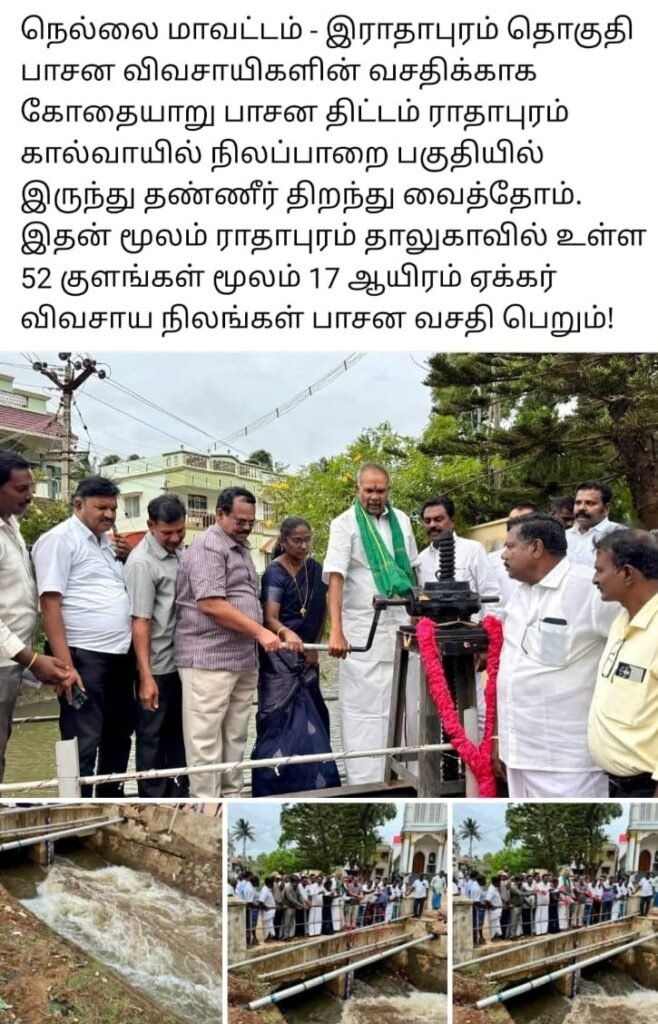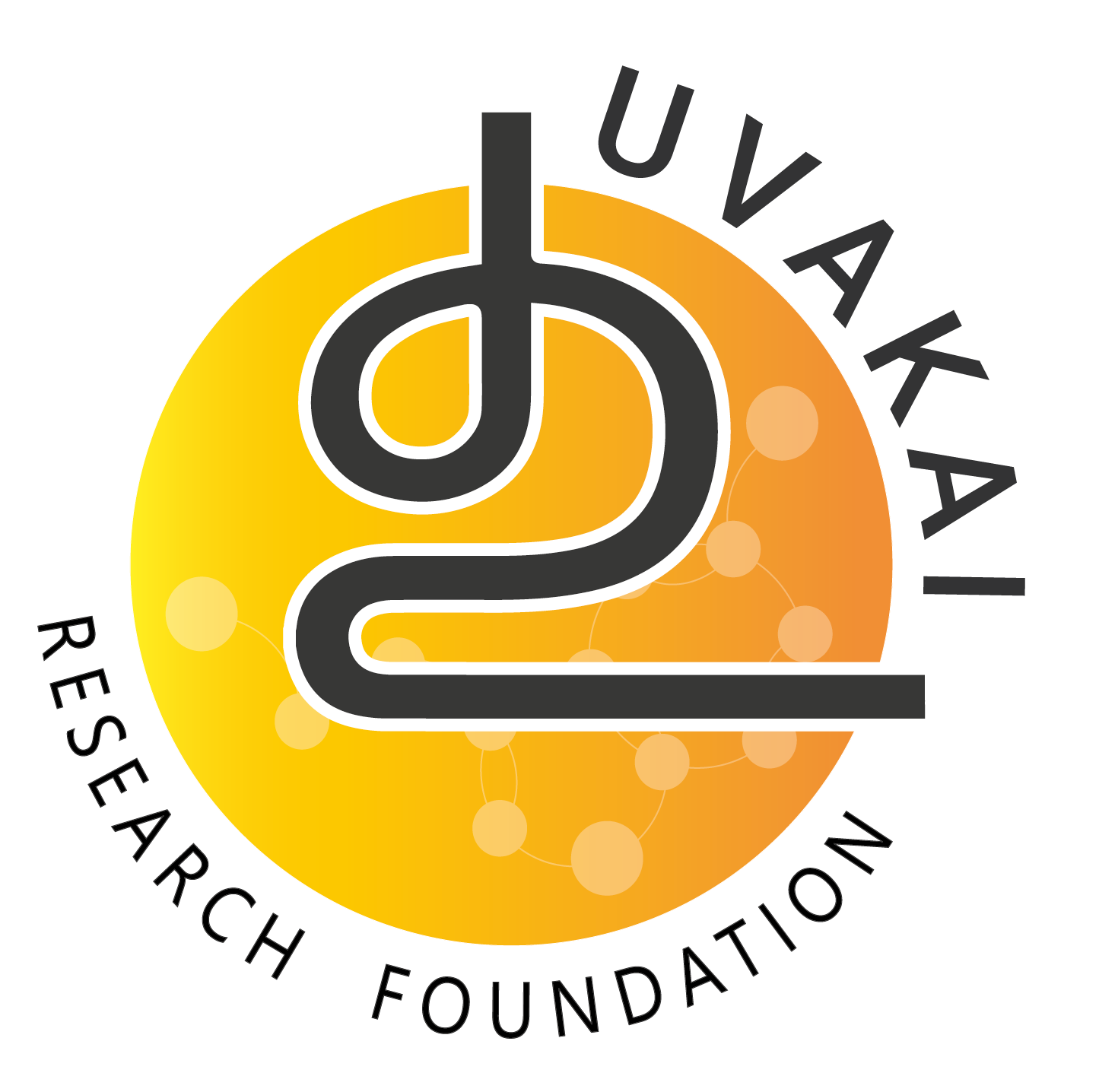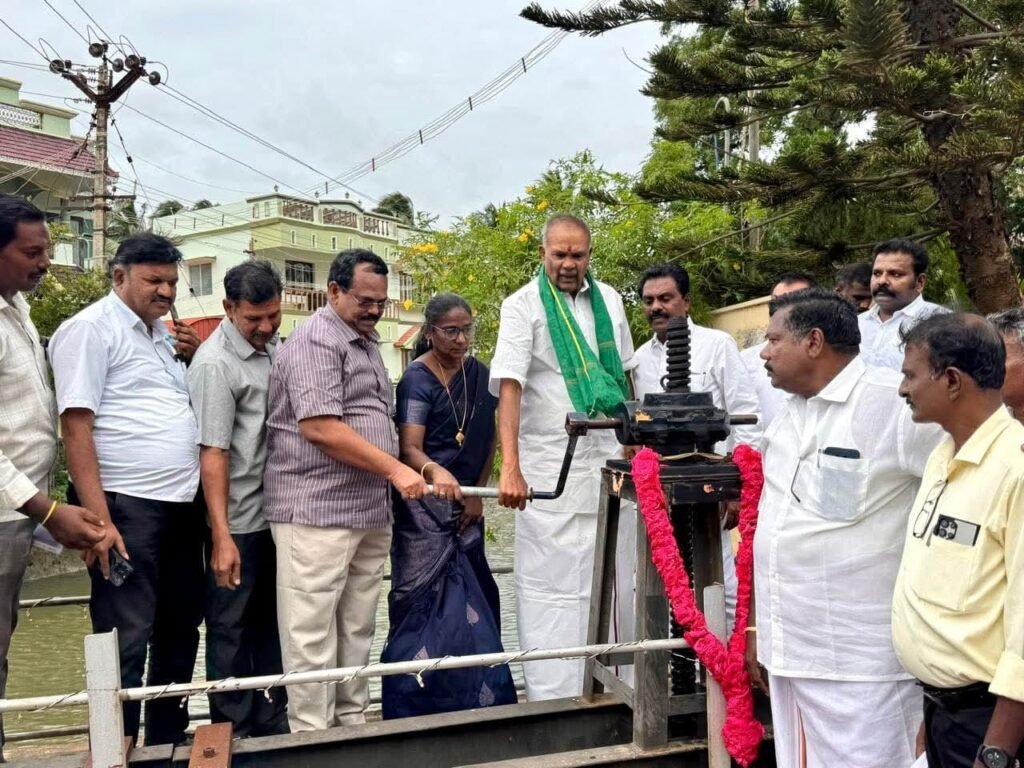
Uvakai Research Foundation acknowledges the timely release of water to the Radhapuram Channel on 16.06.2025, a much-needed step for farmers preparing for cultivation under the South West Monsoon. However, this gesture, though appreciated, is overshadowed by longstanding issues in water allocation, distribution efficiency, and governance.
🔹 A Canal Designed for 150 Cusecs, Supplied with Just 30
The Radhapuram Channel is designed to carry 150 cusecs of water. This year, the Government has released only 30 cusecs—a mere 20% of the designed capacity. This drastically reduces the ability of the system to fulfill its intended function: supporting irrigation across the vast ayacut dependent on this channel.
As per the CAG report, and based on WRD data, the channel’s hydraulic efficiency stands at just 42%. That means only 12.6 cusecs of the 30 cusecs released actually reaches the fields. In volumetric terms, while the release equals 12.96 million cubic feet (mcft) per day, only 1.09 mcft/day is effectively conveyed through the channel.
🔹 52 Tanks, But Only 63% Can Be Filled in 138 Days
The Radhapuram Channel feeds 52 irrigation tanks with a combined storage capacity of 217 mcft. With a net flow of 1.09 mcft/day, even if water flows continuously for 138 days, only around 63% of tank capacity will be met. This means that even the small proportion of the ayacut (less than 5%) that depends on tank irrigation is also left underserved.
🔹 A Crippled Network of Distributary Channels
More alarming is the condition of the distributary channels that connect the main canal to the tanks. These are in a severely dilapidated state, with a carrying capacity below 1 cusec. Only ~0.085 mcft/day of water reaches the tanks via these distributaries. At this rate, it would take an estimated 2,552 days—almost 7 years—to fill all 52 tanks.
🔹 95% of Ayacut Relies on Direct Irrigation—Now in Peril
Only less than 5% of the ayacut is served by tanks. The remaining 95% relies on direct irrigation from the canal—now left unsupported due to these inefficiencies.
At a time when the Kodaiyar basin is entirely dependent on the South West Monsoon, it is critical that tanks are filled and water is efficiently routed to the fields. Unfortunately, this opportunity is being wasted, as before.
🔹 Unresolved Questions on Ayacut Extent and Water Demand
While official records cite the original ayacut as 17,000 acres, the Water Resources Department (WRD) has declared a permanent ayacut gap of 2,288.15 hectares (5,652 acres) due to the erection of windmills in the region.
However, Uvakai Research Foundation questions the validity and timeliness of this estimate. Local farmers report that cultivation has resumed in many windmill-affected areas, with most lands now used for farming except the footprint directly beneath the windmill towers. Moreover, the period of windmill installation restrictions has already lapsed, and the affected lands are no longer idle.
In addition, several parcels of land that were traditionally rainfed are now converted into irrigated farms through the use of dug wells. These changes indicate that the actual irrigated command area may have expanded rather than shrunk.
Has the ayacut ever been reassessed? Has the water requirement been recalculated in light of these shifts? Uvakai Research Foundation demands that the water budget for the Radhapuram Channel be prepared immediately, and that it should be done in collaboration with the Horticulture and Agriculture Departments, reflecting actual land use and irrigation practices on the ground.
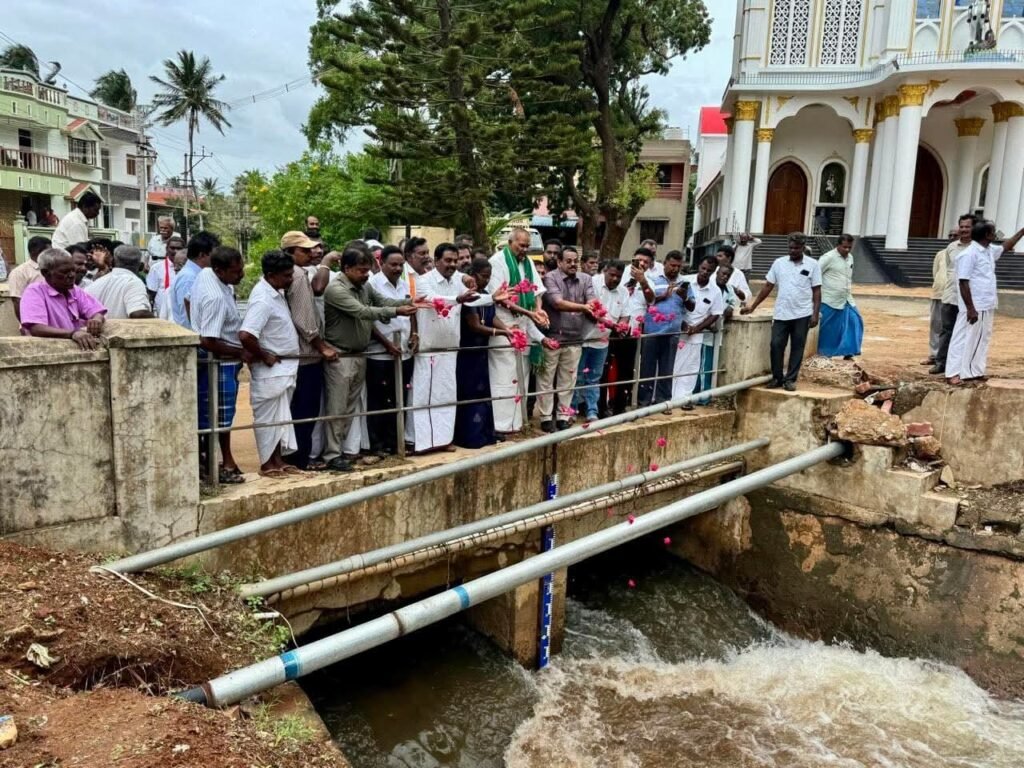
🔹 Why Is There a Government Order for Opening a Shutter?
Uvakai raises a serious concern regarding the process followed for water release. The Government Order for this release was issued by the WRD Secretary through the Governor’s order—an unnecessary bureaucratic overreach for an operational decision like opening a sub-channel shutter.
Tamil Nadu has officially adopted the Participatory Irrigation Management (PIM) system and has established Water Users Associations (WUAs) to manage local irrigation. In such a context, water distribution should be based on real-time demand and data, not on top-down political or administrative orders.
🔹 Where is the Water Budget?
There is no publicly available water budget indicating:
How much water is available in the system?
How much is allocated to Radhapuram Channel?
What quantity is required for the current cropping season?
The Government Order does not specify the ayacut-wise allocation, making it impossible to track efficiency, fairness, or adequacy. Without a transparent water budget, water management becomes speculative and vulnerable to political interference.
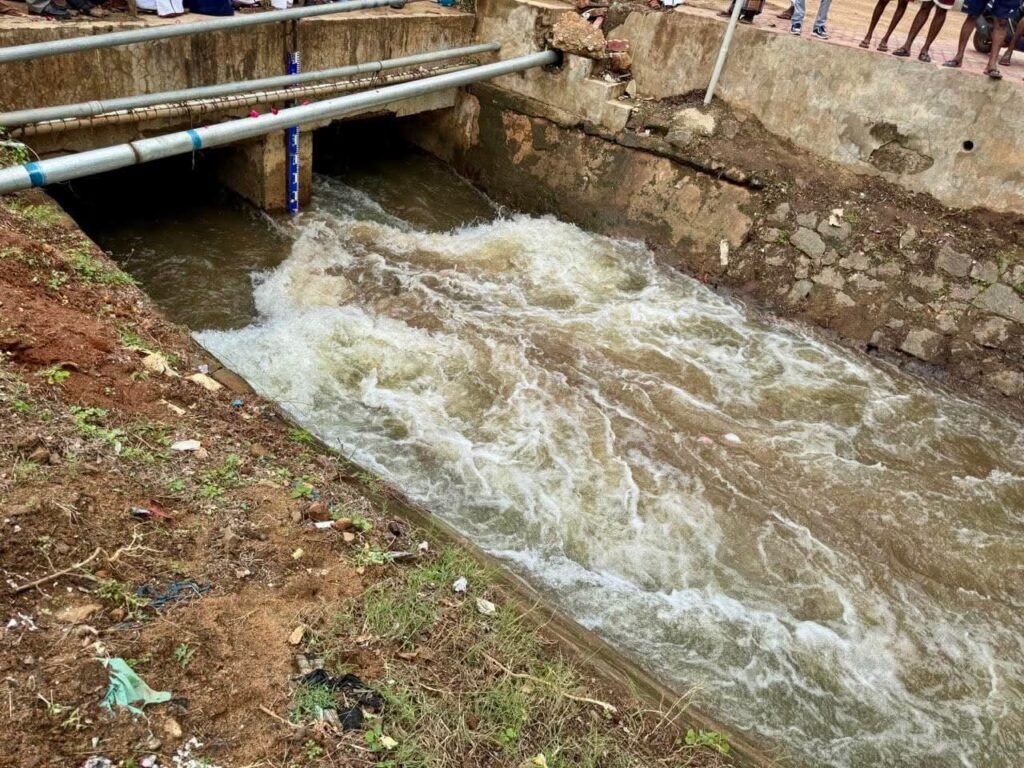
🔹 What Uvakai Research Foundation Demands
While we appreciate the gesture of timely water release, it is important to reiterate that:
Canal efficiency has remained dismal for decades.
Distributary systems are non-functional.
Ayacut data is outdated.
Water users are left powerless in the face of bureaucratic overcontrol.
Uvakai Research Foundation urges the Government of Tamil Nadu to:
Develop and publish annual water budgets, channel-wise and ayacut-wise, based on actual field conditions.
Fix distribution rules based on crop water requirements, rainfall forecasts, and tank storage status.
Reassess and update the ayacut area, especially in windmill and well-irrigated zones.
Empower Water Users Associations to take charge of operational water governance.
Stop micro-level political interference and allow science, data, and local participation to drive irrigation planning.
📣 Conclusion
Water is not just a resource; it is the lifeblood of agriculture in southern Tamil Nadu. If we are to sustain farming livelihoods and ensure equitable access, we must transition from political management to participatory, data-driven water governance.
Let us not lose another season to inefficiency. Let us act—systematically, scientifically, and sincerely.
